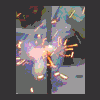Does anyone object to an address change mode whereby only the box to be changed can be plugged in to the master?
Is there any feasible way to do it without the master, i.e. the field modules are individually programmable themselves?
That would make life a lot easier in the field, similar to FireOne rails where you set the code on the module itself before needing to ever connect anything up.

















